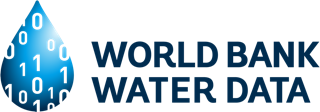The Medium-Term Effects of Home-based Early Childhood Development Intervention Impact Evaluation (ECDIIE) covered 96 small towns in central Colombia, representing a large number of small communities across a relatively big geographical area. It exploited structures in place from the government's Conditional Cash Transfer Programme, Familias en Accion (FeA), which targets the poorest 20% of households in the country. There are currently three waves of data, a baseline, pre-intervention wave collected between February and June 2010, and a follow-up wave 18 months later between September and December 2011, at the end of the intervention period. The second wave of follow-up data collection occurred 2 years after the first follow-up data collection between September and December 2013. The beneficiaries of FeA periodically elect a female representative, called the Madre Lider (ML). We randomly selected three from each town (municipality), and then from the families represented by the ML we randomly selected 5 children aged 12 to 24 months to be eligible for the intervention. Within each municipality, eligible households were randomly allocated (at the municipality level) to each of the following treatment arms: 1. Control 2. Stimulation + Supplementation 3. Stimulation 4. Supplementation The stimulation intervention consisted of weekly visits to the homes of the target children, each visit lasting around one hour. The home visitors received a three-week training programme in activities designed to stimulate children at different ages. They also received a weekly curriculum as a guide, and a set of locally produced materials (homemade toys from recycling material, picture books, puzzles, etc.). The supplementation arm consisted of providing daily sachets of multiple micronutrient powder to mothers, via the home visitors, to add to the target child's food. Sachets were designed to provide iron (12.5mg), zinc (5mg), Vitamin A (300 µg retinol equivalent), Vitamin C (30mg) and folic acid (160 µg) for the children targeted.


